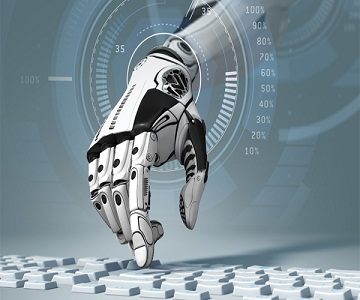A blockchain is a developing rundown of records, called blocks, that are safely connected together utilizing cryptography.[1][2][3][4] Each square contains a cryptographic hash of the past square, a timestamp, and exchange information (by and large addressed as a Merkle tree, where information hubs are addressed by leafs). The timestamp demonstrates that the exchange information existed when the square was distributed to get into its hash. As squares each contain data about the square past to it, they structure a chain, with each extra square supporting the ones preceding it. Accordingly, blockchains are impervious to adjustment of their information in light of the fact that once recorded, the information in some random square can’t be modified retroactively without changing every ensuing square
BLOCKCHAIN BECOME POPULAR BY THE YEAR OF2020.
Blockchains are regularly overseen by a shared organization for use as a freely appropriated record, where hubs all things considered stick to a convention to impart and approve new squares. Despite the fact that blockchain records are not unalterable as forks are conceivable, blockchains might be thought of as secure by plan and embody a disseminated processing framework with high Byzantine shortcoming tolerance.[5]
The blockchain was advocated by an individual (or gathering) involving the name Satoshi Nakamoto in 2008 to act as the public exchange record of the cryptographic money bitcoin, in view of work by Stuart Haber, W. Scott Stornetta, and Dave Bayer.[3][6] The personality of Satoshi Nakamoto stays obscure to date. The execution of the blockchain inside bitcoin made it the primary advanced cash to take care of the twofold spending issue without the need of a confided in power or focal server. The bitcoin configuration has enlivened other applications[3][2] and blockchains that are coherent by people in general and are broadly utilized by digital currencies. The blockchain is viewed as a sort of installment rail.[7]
Private blockchains have been proposed for business use. Computerworld called the promoting of such privatized blockchains without an appropriate security model “snake oil”;[8] in any case, others have contended that permissioned blockchains, if painstakingly planned, might be more decentralized and thusly safer practically speaking than permissionless ones.
A blockchain is a decentralized, conveyed, and generally open, computerized record comprising of records called blocks that are utilized to record exchanges across numerous PCs so that any elaborate square can’t be adjusted retroactively, without the change of all resulting blocks.[3][18] This permits the members to check and review exchanges freely and moderately inexpensively.[19] A blockchain information base is overseen independently utilizing a shared organization and an appropriated timestamping server. They are validated by mass joint effort fueled by aggregate self-interests.[20] Such a plan works with strong work process where members’ vulnerability it is minor to respect information security. The utilization of a blockchain eliminates the attribute of endless reproducibility from an advanced resource. It affirms that every unit of significant worth was moved just a single time, tackling the well established issue of twofold spending. A blockchain has been depicted as a worth trade protocol.[21] A blockchain can keep up with title privileges since, when appropriately set up to detail the trade arrangement, it gives a record that constrains proposition and acknowledgment.
Legitimately, a blockchain should be visible as comprising of a few layers:[22]
foundation (equipment)
organizing (hub disclosure, data propagation[23] and confirmation)
agreement (evidence of work, verification of stake)
information (blocks, exchanges)
application (shrewd agreements/decentralized applications, if pertinent)
Blocks



